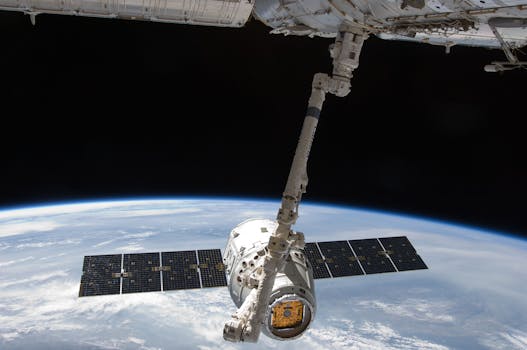The Future of Satellites: Revolutionary Technologies and Trends

The Future of Satellites: Revolutionary Technologies and Trends
The future of satellites is poised to revolutionize the way we communicate, navigate, and understand our planet. With advancements in technology and decreasing costs, satellites are becoming increasingly accessible and essential for various industries. The future of satellites holds great promise, with new technologies and trends emerging that will shape the industry in the coming years.
Introduction to the Future of Satellites
As we look to the future of satellites, it’s essential to understand the current state of the industry. Satellites have been a crucial part of our daily lives for decades, providing services such as navigation, communication, weather forecasting, and remote sensing. However, the industry is on the cusp of a significant transformation, driven by advancements in technology, changes in consumer behavior, and the increasing demand for satellite-based services.
Advancements in Satellite Technology
One of the most significant advancements in satellite technology is the development of small satellites, also known as CubeSats. These tiny satellites are approximately the size of a shoebox and weigh less than 1.33 kg (3 lbs). Despite their small size, CubeSats are capable of performing a wide range of tasks, from Earth observation to communication. The small size and low cost of CubeSats have made them an attractive option for startups, researchers, and governments, enabling them to launch satellites into space at a fraction of the cost of traditional satellites.
Another significant advancement in satellite technology is the development of reusable launch systems. Companies such as SpaceX and Blue Origin are leading the charge in this area, with their reusable rockets capable of launching satellites into space and returning to Earth intact. This technology has the potential to significantly reduce the cost of launching satellites, making space more accessible to a wider range of organizations and individuals.
Emerging Trends in the Satellite Industry
Several emerging trends are expected to shape the future of the satellite industry. One of the most significant trends is the growth of satellite constellations. These constellations consist of hundreds or even thousands of small satellites working together to provide global coverage and services such as broadband internet, navigation, and Earth observation. Companies such as OneWeb, Amazon’s Kuiper Systems, and SpaceX’s Starlink are leading the charge in this area, with plans to launch thousands of satellites into space in the coming years.
Another emerging trend in the satellite industry is the use of satellites for Earth observation. Satellites are being used to monitor the environment, track climate change, and predict natural disasters such as earthquakes and hurricanes. The use of satellites for Earth observation is expected to become increasingly important in the coming years, as governments and organizations seek to better understand our planet and mitigate the effects of climate change.
Conclusion and Future Outlook
In conclusion, the future of satellites is poised to revolutionize the way we communicate, navigate, and understand our planet. With advancements in technology and decreasing costs, satellites are becoming increasingly accessible and essential for various industries. As we look to the future, it’s essential to consider the potential risks and challenges associated with the growth of the satellite industry, such as space debris and the potential for satellite collisions.